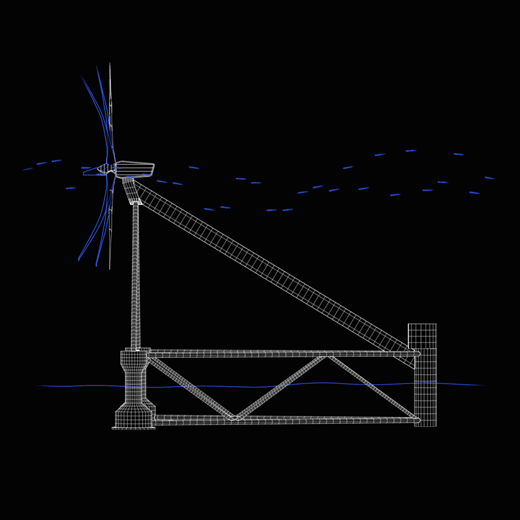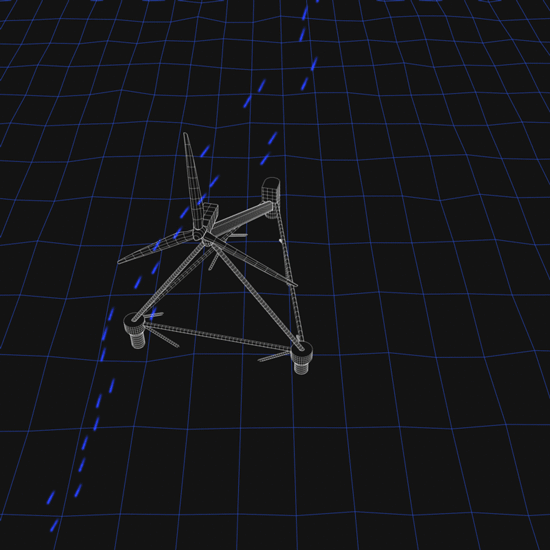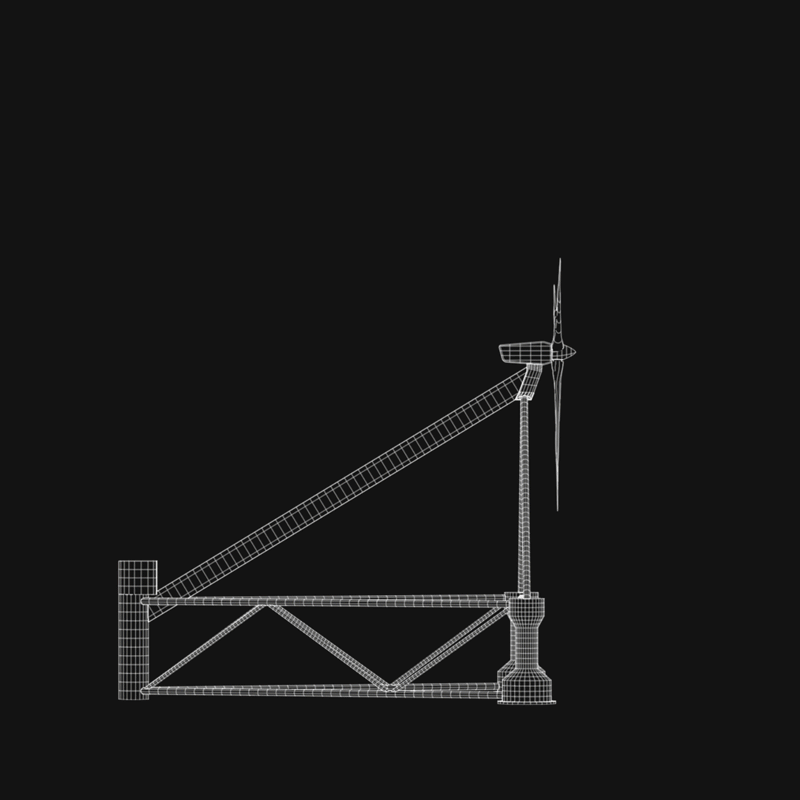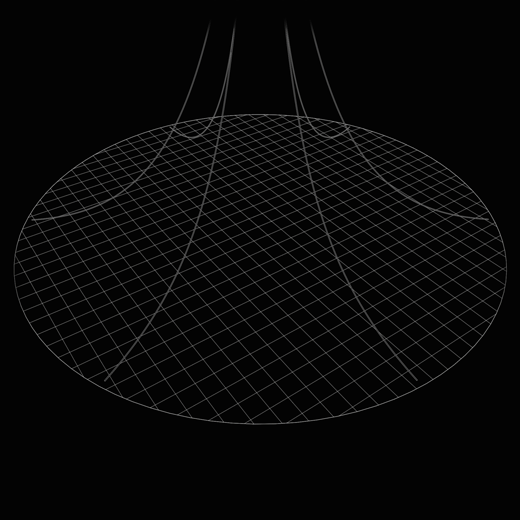A step change in the weight and costs of floating wind
Discover the features
X1Wind at a glance
Key features
Presenting a self-orientating floating design that reduces the weight and minimizes the costs of installation and maintenance, making floating wind competitive.
Key innovations
X1 Wind concept is as light as TLP platforms and fixed offshore wind foundations, but can be easily installed with small vessels
Our innovative technology strives to be as light and simple as possible, combining the advantages of SPM systems (easy installation) with those of TLP platforms (weight reduction and enhance stability). This enables a radical weight reduction, achieving a platform much lighter than most current spar and semi-submersible systems under test, while our unique PivotBuoy® single point mooring system allows a simple assembly and installation strategy using local infrastructure.

Weathervaning Downwind Configuration
Our platform uses an innovative single point mooring (SPM) system, the PivotBuoy®, that integrated into a downwind configuration allows the platform to passively weathervane and self-orientate. The downwind configuration enables a complete redesign of the floating structure, removing the traditional tower and creating a tripod-shaped platform that is more efficient in the load transmission. Downwind turbines also show some benefits compared to upwind systems, since downwind solutions do not need to tilt angles, rotor coning, or the use of pre-bent blades to avoid tower strike, which reduces turbine manufacturing costs and critical when scaling up to large 15MW+ rotors.
Our PivotBuoy® Connection System
The PivotBuoy® is the innovative single point mooring developed by X1 Wind to optimize floating platforms. The PivotBuoy combines a SPM with a small TLP (Tension-Leg Platform) that allows a significant platform weight reduction compared to spar and semisubmersible systems. The PivotBuoy is designed to be pre-installed with the mooring system and to allow a quick connection and disconnection of the platform. This allows the platform to be assembled onshore and then towed to site using small to medium vessels instead of heavy lift vessels, which simplifies offshore operations and reduces installation costs.



Designed to minimize O&M costs
Reliability is extremely critical offshore. That is why our goal is to use passive systems in our platform to minimize maintenance needs, such as the new self-orientating PivotBuoy® system. Additionally, the TLP mooring system minimizes the motions at the PivotBuoy, reducing fatigue on the dynamic cable as well as facilitating maintenance operations.
More Scalable
The design of the structure allows modular construction and makes the design extremely scalable. Turbine developers are already working on rotor designs large of 15MW+ and our structural platform design works more efficiently (avoiding the high bending moments in tower-based systems) as well as allowing turbine blades to be lighter, longer, and cheaper as they can bend away from the structure. We are also not constrained by water depth, being able to deploy cost-effectively at depths from 60m to more than 500m with our vertical mooring system.


Smaller footprint
The PivotBuoy® mooring system is composed of a fixed part, anchored to the seabed, and a moving part, that rotates with the platform. Similar to a regular TLP mooring system, it uses three tensioned cables or tethers to anchor the PivotBuoy, achieving a vertical mooring system. This mooring, compared to the long spread and drag anchors used in catenary systems, represents a huge reduction of the platform footprint on the seabed, and therefore a reduced environmental impact.